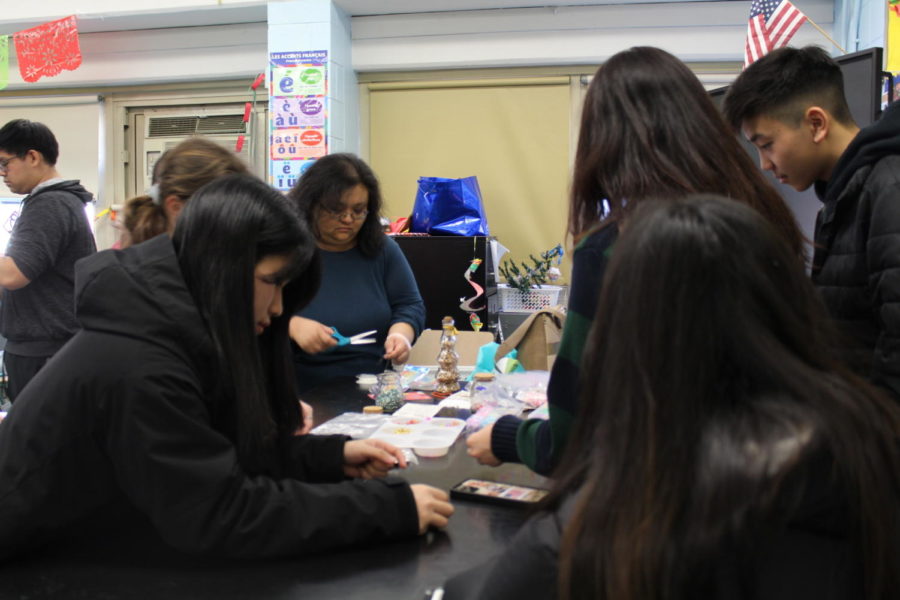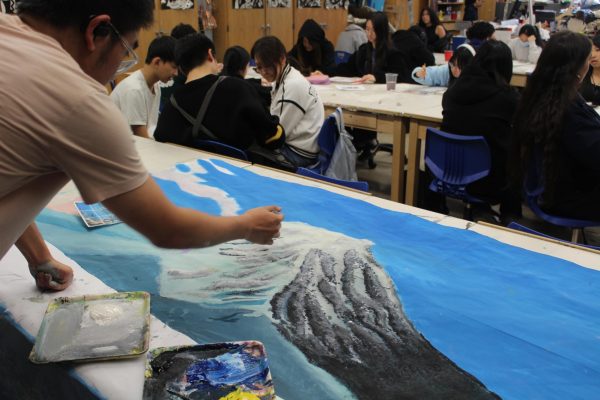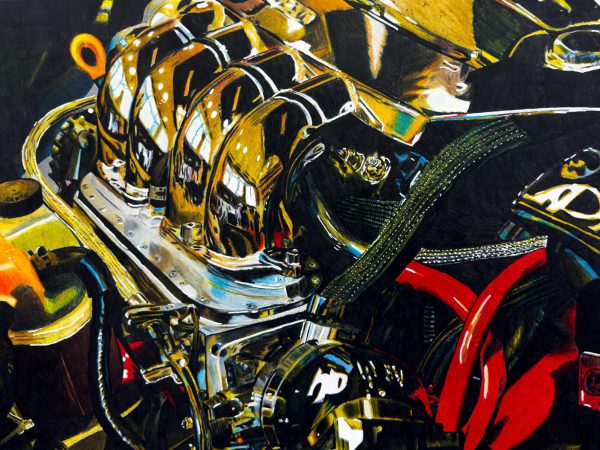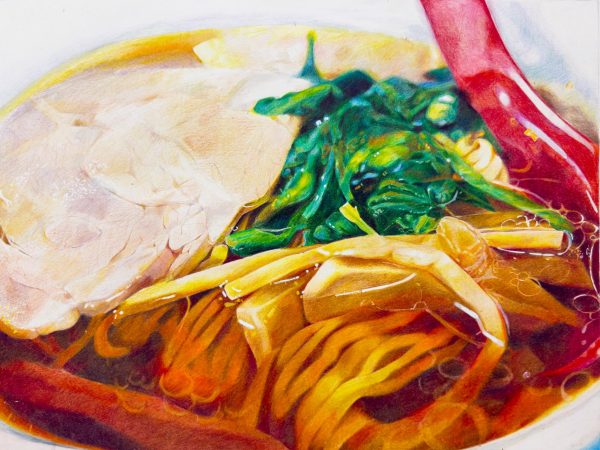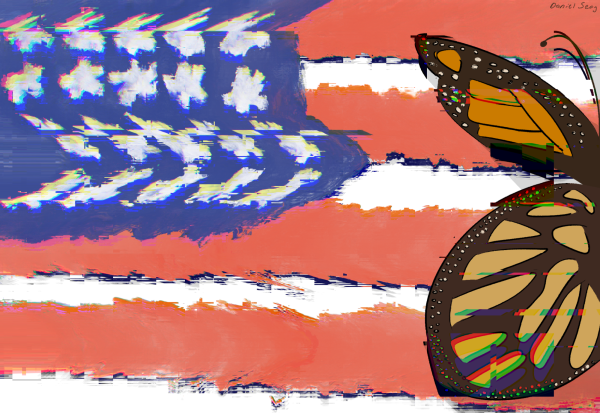Crash Course in Francis Lewis’ Creative Art Classes
Walking through the doors, the sound of laughs fills the air as I draw closer to the paint splattered tables. I can hear the ripping sound of paper and tape as students prepare at their work areas and gather their brushes, sponges, paint palettes and water cups to get started. The teacher gives a demonstration on a brand-new art technique, using everyday saran wrap as their tool. As the students return to their seats, I can see both the hesitation and complete certainty in their eyes as they choose their own colors and move their brushes in any direction they want. With their heads hanging low, they are completely focused and engaged on the blank canvas sitting in front of them. As they grip their brush in their hand and paint the first stroke, you can see the inspiration and expression right behind it, you can see their art.
As an art credit is a mandatory requirement for graduation, Francis Lewis offers an array of various classes and opportunities to students. Each class covers a multitude of different styles, materials, techniques and mediums pertaining to their interests. No matter what class you take, each has teachers who provide students with an engaging and rigorous curriculum that furthers their skills and understanding of art.
“I approach it as an artist because I know that if you’re working on something you don’t care about that, that’s meaningless and what makes it different for me is that I just want it to be a personal thing for them on some level,” art tech and digital art teacher Mr. Jajac said. “I am going for intrinsic motivation so that they care about it, and it’s connected to themselves which makes it meaningful.”
Product Design teacher Ms. Cardona said her students use simple, everyday materials in order to create “bracelets, origami, ornaments, slime, and clay, all in one class.”
“Unconventional art,” Ms. Cardona said. “The idea that students learn to manually make things and hopefully every lesson or every unit is teaching them to think outside the box and make something different that they normally wouldn’t make themselves.”
“Maybe a little more of a hobby mindset too,” Ms. Cardona added. “Then the idea is if they enjoyed it, they can continue to do that later on as their personal hobby. Or if they get really good at it, turn it into a product that they can sell eventually.”
Similar to the crafting emphasis of Ms. Cardona’s class, Ms. Vaggelas Elements of Art class focuses on a combination of studio design and art history in order to “develop vocabulary and language skills to be able to discuss, share, answer questions and write about art.”
“They’re doing a booklet made up of elements of art and principles of design so they can familiarize themselves with combining these elements and how it develops into an art piece,” Ms. Vaggelas said. “Other activities that they’ve worked on is learning about the art artists like Don Frida Kahlo in the past, her hard artistic style, about her art movement, and what’s her influence on those arts.”
Mr. Jajac’s Art Tech class utilizes computer applications such as photo-shop and adobe illustrator to create a more digital approach to art.
“Early in Photoshop especially, we’re all about photo manipulation, like adjusting the contrast, saturation color, cropping, and just using photo-shop for all the things that it does,” Mr. Jajac said. “Like we are doing photo manipulation, making people’s eyes bigger or making people’s faces bigger, combining photos like a dog’s nose, putting it on a person, doing that kind of collage stuff, layering them on top of each other.”
On the contrary, Mr. Mason’s Intro to Art and Design, Studio Design and Advanced Studio Art focus more on the traditional arts, including mixed media, still life painting, drawing, and figure drawing.
“Most of my stuff is more visual and usually we try to get students to have their own voice,” Mr. Mason said. “It may be the same in some classes where they want to have students get their own voices, but that’s a really basic part of our art piece.”
“I want them to learn their own technique,” Mr. Mason elaborated. “So when it is time for it, they can voice whatever they feel in their work visually.”
Students in Intro to Art and Design classes learn various techniques through this course, which allows them to refine their skills in different art mediums.
“A project my class has worked on is a still life color theory project where we drew a piece with objects that we had to compose ourselves and we applied the use of either analogous or complementary colors,” Intro to Art and Design sophomore Yu Wei Chi said. “I really enjoyed the rendering process of the drawing, where after I had already laid down a layer of color pencil and I could just focus on shading and lighting.”
Apart from Intro to Art and Design, Elements of Art, Art Tech, and Product Design, Francis Lewis offers students studio design, art, yearbook design, drawing, and digital art, among future ones to come.
“As long as you have a love of art and you actually are interested in learning, that’s all you really need,” Mr. Mason said.
Hi, my name is Kathrine Yusupov and I first joined journalism in 2022 as a sophomore. After being managing editor in the 2023-2024 school year, I look...



